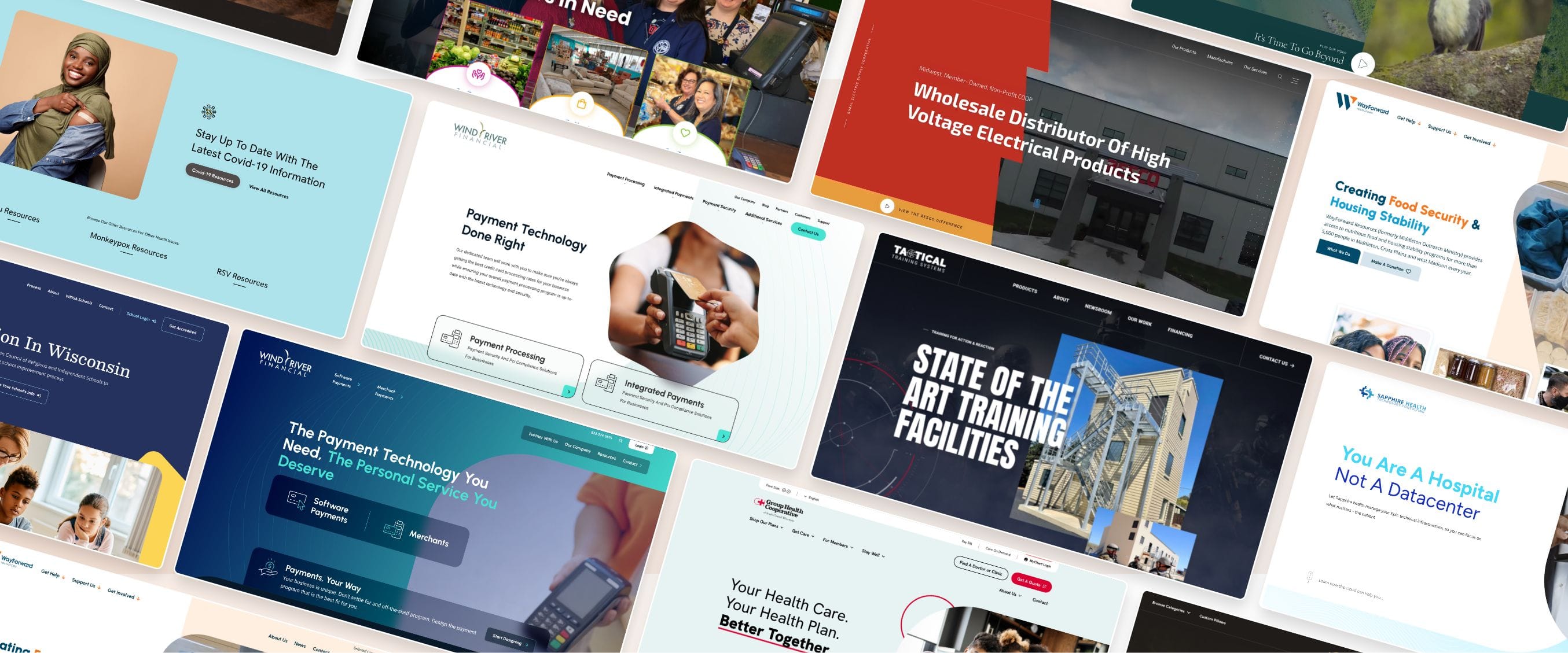Leading Tips for Developing an Impactful Website Style That Transforms
To achieve this, one have to take into consideration a range of aspects, including understanding the target audience, focusing on individual experience, and optimizing for mobile systems. The critical use of compelling call-to-actions and a distinct visual hierarchy plays a critical duty in assisting users via their trip.

Understand Your Target Market
Recognizing your target audience is fundamental to reliable internet site layout, as it prepares for creating an interesting individual experience. Recognizing that your customers are, including their demographics, choices, and actions, allows developers to customize the web site's web content, format, and performance to satisfy specific demands.
Carrying out complete marketing research is crucial in this process. Surveys, meetings, and analytics can offer valuable insights into user assumptions and pain points. By assembling this information, developers can develop user personas that stand for various sections of the audience, making sure that style decisions are educated and relevant.
Moreover, understanding the target audience aids in selecting proper design elements such as color design, typography, and images that reverberate with individuals. A website that talks straight to its audience cultivates a feeling of connection and trust fund, encouraging longer visits and greater conversion rates.
Inevitably, a user-centered approach to web site design not just improves individual contentment however also supports organization objectives by driving interaction and loyalty. By prioritizing the demands and preferences of the target market, a site can effectively serve its purpose and accomplish wanted end results.
Prioritize Individual Experience
To boost the general performance of a website, focusing on customer experience (UX) is essential (Website Design). A well-designed UX makes sure that visitors can navigate the website easily, discover info promptly, and engage with content meaningfully. This leads to enhanced individual satisfaction and greater conversion rates
Begin by executing intuitive navigation. Menus needs to be logically structured, permitting customers to find essential areas of the website with minimal initiative. Consistency in layout elements, such as color design and font styles, promotes knowledge, which is crucial for keeping individual interaction.
Additionally, take into consideration the packing speed of your internet site. A hold-up of just a couple of seconds can lead to substantial drop-offs, as individuals are less most likely to wait for a slow-loading web page. Enhancing images and maximizing code can improve efficiency and keep visitors.
In addition, clarity in material discussion is important. Usage succinct, engaging language and separate message with visuals to improve readability. By prioritizing individual experience, you not just create a much more delightful environment for visitors yet also enhance your Source brand name's reliability. Eventually, an emphasis on UX is an investment in the long-term success of your web site.
Optimize for Mobile Gadgets
Maximizing for mobile devices is vital in today's electronic landscape, where an enhancing number of individuals gain access to internet sites through mobile phones and tablet computers. A mobile-friendly layout not just boosts customer experience but also plays a significant function in enhancing internet search engine positions. To accomplish this, it is vital to take on a receptive style that immediately adapts to various screen sizes and alignments.

Loading rate is an additional important factor; mobile individuals are typically less individual and expect quick accessibility to information. By prioritizing mobile optimization, you make sure that your website stays affordable and properly engages a wider target market.
Usage Compelling Call-to-Actions
A site's efficiency often rests on its capability to lead site visitors toward desired actions, making compelling call-to-actions (CTAs) crucial parts of style. CTAs work as the pivotal points that route users to involve with the website, whether that means making a purchase, enrolling in a newsletter, or downloading a resource.
To create efficient CTAs, clearness is vital. Usage succinct language that plainly connects the activity you desire the customer to take. Expressions such as "Get going," "Register Free," or "Store Now" not just communicate seriousness however likewise get rid of uncertainty. The positioning of CTAs is similarly crucial; they must be tactically placed throughout the website to ensure they are quickly visible, particularly in high-traffic areas.
In addition, the style of CTAs ought to stick out without being noticeable. Employ contrasting shades and clear typefaces to ensure they capture attention. In addition, take into consideration utilizing directional cues, such as arrowheads or pictures, to direct individuals toward these switches. By focusing on these elements, organizations can dramatically improve user involvement, driving conversions and inevitably accomplishing their website's objectives.
Concentrate On Visual Power Structure
Effective web site design depends heavily on a well-structured visual power structure that guides customers through material seamlessly. By arranging components in a way that focuses on information, developers can websites boost user experience and assist in decision-making. This involves using dimension, color, contrast, and spacing purposefully to accentuate one of the most crucial parts of a webpage.
The use of bigger fonts for headings and subheadings establishes a clear difference in between different sections, enabling customers to check content effortlessly. In addition, using contrasting colors for switches and calls-to-action can record customer attention and encourage interaction. Whitespace is an additional essential component; it stops mess and makes it possible for customers to concentrate on key messages without interruptions.
Pictures and graphics need to complement the text while also adhering to the well established power structure, reinforcing the overall message (Website Design). Consistency in style components, such as color pattern and typography, additional enhances the aesthetic power structure, making navigating instinctive

Conclusion
In final thought, effective website layout requires an extensive understanding of the target audience, prioritization of user experience, and mobile optimization. Eventually, a well-executed website layout serves as a critical part in driving customer actions and achieving organization goals.
Comments on “End-to-End Website Design Solutions from Strategy to Completion”